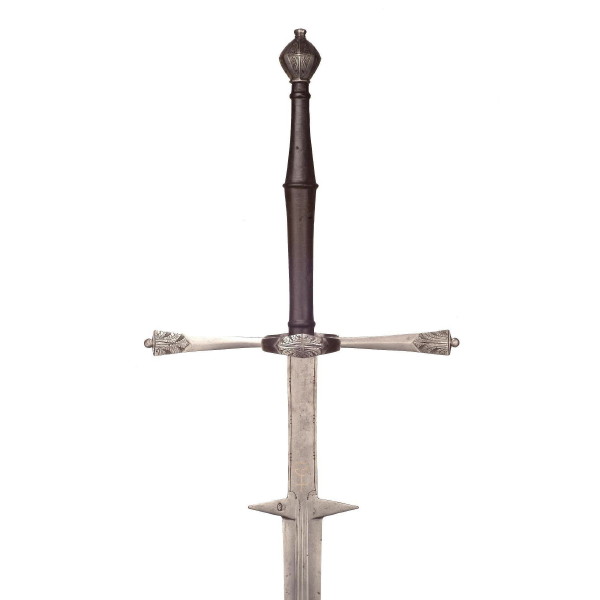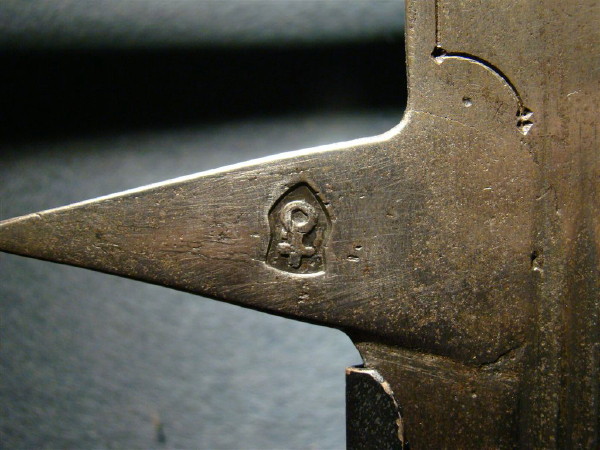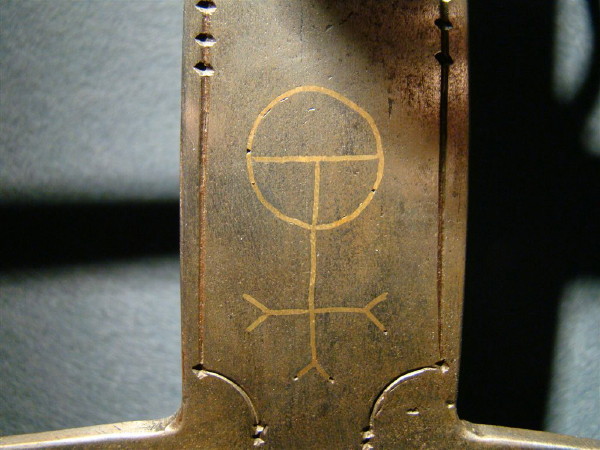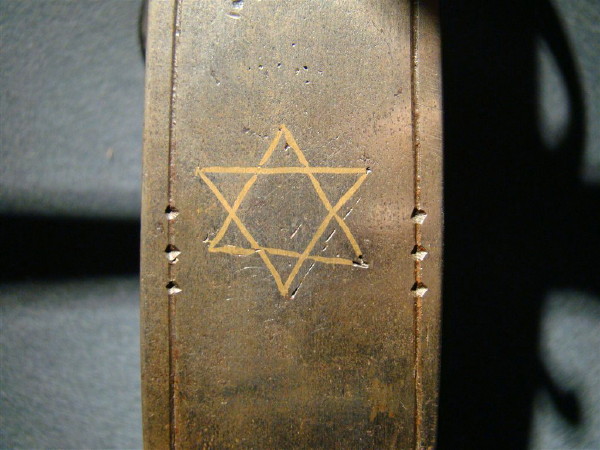| Author |
Message |
|
Christopher Lee
Location: Sunshine Coast, Australia Joined: 18 Apr 2006
Posts: 160
|
 Posted: Fri 31 Dec, 2010 9:51 pm Post subject: German two hander - Symbols and marks Posted: Fri 31 Dec, 2010 9:51 pm Post subject: German two hander - Symbols and marks |
 |
|
I was wondering if anyone might be able to identify or at least elaborate upon the symbols that appear on the blade. The write up on the sword itself is:
GERMAN TWO-HANDED SWORD, circa 1550-1580. The hilt featuring a heavy tetrahedral pommel, with a total of eight faces decorated with an engraved foliate design and with a button finial. The long grip is leather-covered, and formed of two sections with three raised transverse ridges. The inlaid marks upon the ricasso are particularly interesting."
Is the mark stamped into the parierhaken a makers mark and if so, does anyone recognise it?
What does/did the "cross and orb" arrangement on the ricasso signify and is it indicative of anything in particular. On the other side of the blade is a star, what would now be termed a star of david. Where these symbols religious, astological, alchemical, good luck charms or had some other meaning?
Any information (or informed speculation) regarding either the symbols or the sword itself would be appreciated.
 Attachment: 23.31 KB Attachment: 23.31 KB

 Attachment: 88.58 KB Attachment: 88.58 KB

 Attachment: 85.36 KB Attachment: 85.36 KB

 Attachment: 84.57 KB Attachment: 84.57 KB

|
|
  |
 |
|
Timo Nieminen
|
 Posted: Sat 01 Jan, 2011 3:18 am Post subject: Posted: Sat 01 Jan, 2011 3:18 am Post subject: |
 |
|
The orb-and-cross, or globus cruciger if you prefer Latin, is mainly a symbol of authority, and part of the crown jewels of the Holy Roman Empire, the Byzantine Empire, Russia, England, Denmark, etc. The equator and 1/2-line of longitude are distinctive, and only appear on the orb symbol, and not on the Venus-like astrological/astronomical etc symbols, AFAIK.
It also has a religious meaning, Christ over the Earth, a symbol of divine authority.
Or it could be the Holy Hand Grenade of Antioch.
That's it's upside-down in the picture means that it's meant to be viewed with the sword held point-up, which makes me think it was a bearing sword, possibly converted to such use from a regular sword. I guess that it's a symbol of worldly authority, to display in public leading a parade or other procession.
The stamped one might be a maker's mark - some Solingen bladesmiths used the orb-and-cross. (And it's been used by others, and can be seen on silverware etc). Or it could be religious or talismanic. It's been used for both.
The hexagram, I don't know. It's seen wide use, with many meanings. It's a conventional enough representation of a star, and is common heraldry. Apparently, while the 5-pointed star is the default star (and the most common) in Anglo-French heraldry, the 6-pointer is the default in German heraldry. Six-pointed stars or six-pointed spur-rowels (what's the visual difference between a spur-rowel and a "hollow" star on a little stamping?) have been used as maker's marks. Perhaps the inlays, together, are a rather bombastic maker's mark.
"In addition to being efficient, all pole arms were quite nice to look at." - Cherney Berg, A hideous history of weapons, Collier 1963.
|
|
   |
 |
|
|
You cannot post new topics in this forum
You cannot reply to topics in this forum
You cannot edit your posts in this forum
You cannot delete your posts in this forum
You cannot vote in polls in this forum
You cannot attach files in this forum
You can download files in this forum
|
All contents © Copyright 2003-2025 myArmoury.com — All rights reserved
Discussion forums powered by phpBB © The phpBB Group
Switch to the Basic Low-bandwidth Version of the forum
|

